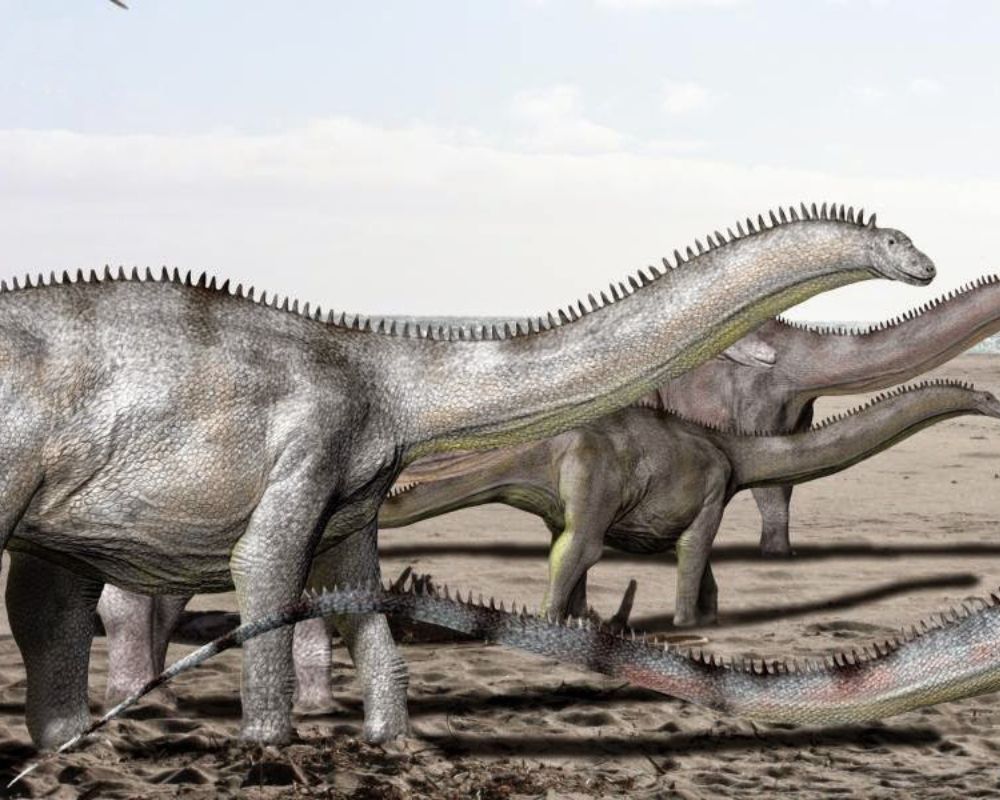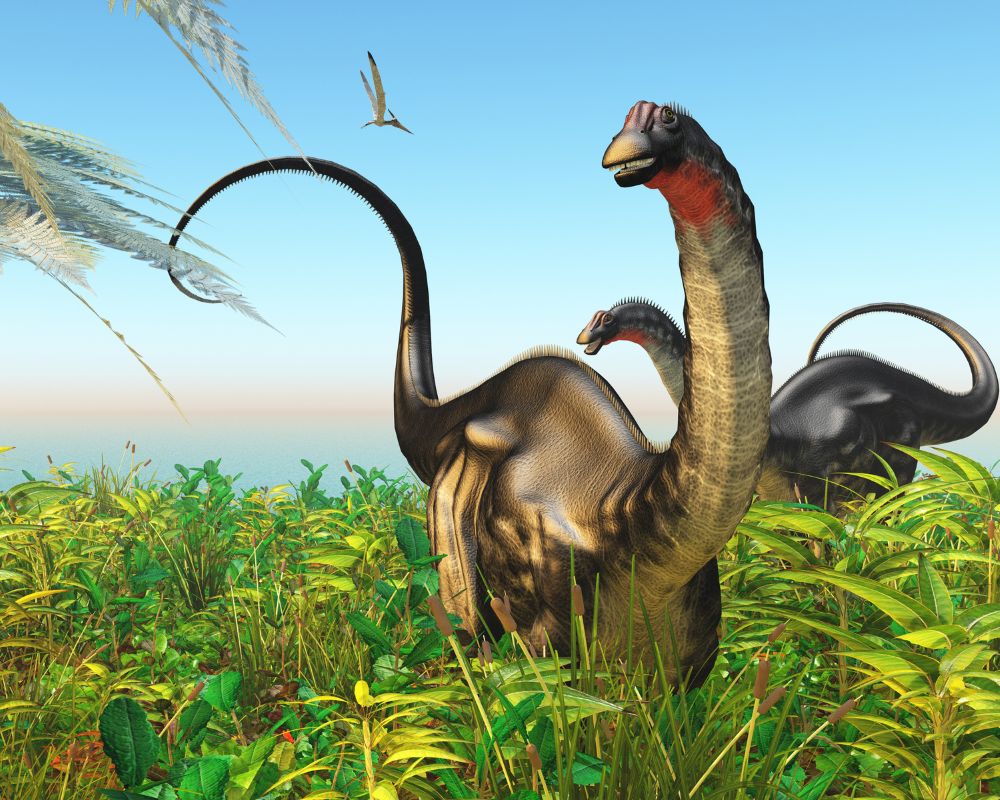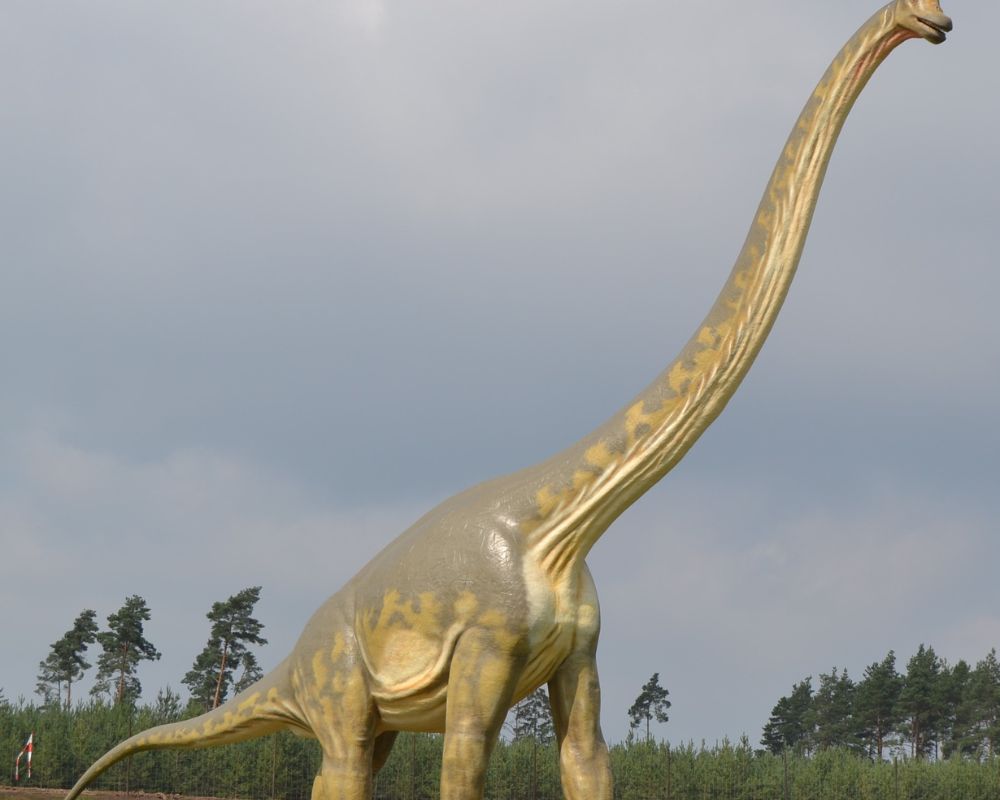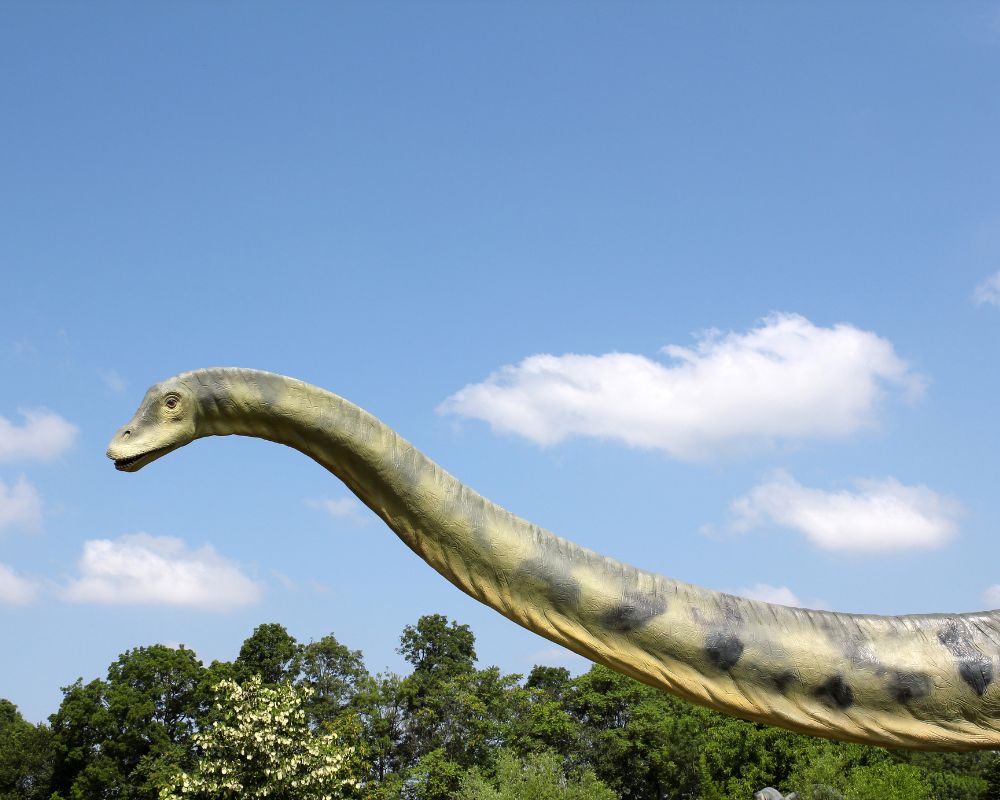A Brontosaurus was a very large and gentle giant that lived during the Jurassic period around 120 million years ago in the western United States at the Morrison Formation in Wyoming and parts of Portugal. With a very long neck, it could reach the highest branches of tall trees and was surprisingly light on its feet.
Table of Contents
Some Quick Facts About the Brontosaurus

| Name | Brontosaurus excelsus, “Thunder lizard” |
| Type of dinosaur | Sauropod |
| Territory | Western United States in North America, rich grasslands |
| Size | Very large, 66 feet long, 28 feet tall, and 70,000 pounds |
| Color | Green and brown |
| Interesting Characteristics | Its forelimbs were stronger than its hind legs, and it had a very long neck |
| Diet | Plants |
| Major Threats | Natural disasters, Venatosaurus, and Allosaurus |
The Brontosaurus was a giant dino titan that roamed North America’s grasslands in the late Jurassic period. As a gentle giant, it used its long neck to grab at branches of tall trees for its meals and was surprisingly lightweight, given its massive frame.
What Did the Brontosaurus Look Like?
The Brontosaurus was a massive sauropod that towered over other dinos of the late Jurassic in Wyoming and Colorado. It had a very long giraffe-like neck and a small head that allowed it to reach the branches of tall trees.
Its small head made it much easier to lift its head to reach up for a snack. It also had a long tail but was relatively short compared to its massive and muscular neck. Paleontologists believe the Brontosaurus was mainly green with brown patches covering its bumpy skin.
What Did the Brontosaurus Eat?

The Brontosaurus was a true herbivore. It roamed the marshes and grasslands of North America and used its very long neck to eat the leaves and twigs off of tall trees. Its long neck gave it a slight edge over other sauropod dinosaurs of the time and allowed it to reach parts of the local foliage that other dinosaurs couldn’t reach.
The diet of the Brontosaurus was very similar to dinos like the Diplodocus and Camarasaurus, but Bronto could reach places that these other dinosaurs could not.
Are Apatosaurus and Brontosaurus the Same?

The Apatosaurus and the Brontosaurus share so much in common that paleontologists once believed they were the same dino. They had very similar frames, and their bones came from the same location in the Morrison Formation.
However, when paleontology compared the Brontosaurus skeleton against the Apatosaurus (or deceptive lizard), it was clear that the Apatosaurs was thicker than the Brontosaurus, which meant that they were two separate species of dinosaurs.
Did Brontosaurus Exist at the Same Time as T-Rex?
No, they did not exist at the same time. Luckily for Bronto, it was not neighbors with the T-Rex. While the T-Rex and Brontosaurus lived in similar areas in North America, they lived about 50 million years apart.
The Bronotsaurs went extinct by the end of the Jurassic period, and the T-Rex rose to domination in the Cretaceous period 50 million years later. If the T-Rex lived at the same time as the Brontosaurus, it would absolutely be a predator to the Brontosaurus!
What is the Difference Between a Brachiosaurus and Brontosaurus?


The Brachiosaurus and the Brontosaurus were two massive sauropods of the late Jurassic, but the Brachiosaurus was slightly bigger. They were titan vertebrates with long necks, herbivores, and long tails, but the Brachiosaurus was even bigger than the Brontosaurus.
The Brachiosaurus was 42 feet tall, which towered over the Brontosaurus, which was 28 feet tall. The Brachiosaurus could also grow to 85 feet long, compared to the Brontosaurus, which was just 62 feet long.
When was the first Brontosaurus reconstructed?
The very first specimen of the now-known Brontosaurus surfaced in 1879. Othniel Charles Marsh, a participant in the bone wars along with E.D. Cope, discovered the bones in the Morrison Formation in North America.
Two years before the discovery of Bronto, Marsh unearthed the bones of Apatosaurus ajax, which were very similar to the Brontosaurus.
Still, differences in the fossils eventually earned Broto its own genus. Today, if you want to catch a glimpse of the massive Brontosaurus, it’s on display at the Yale Peabody Museum of Natural History of the Field Museum of Natural History in Chicago.

